“Their wolf-like appearance make people think they are aggressive, but they're really not. These highly intelligent breeds that are gentle and loving, but needs to exercise a lot!”
Alaskan Husky
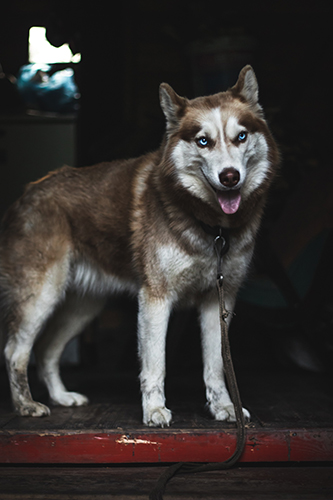
Alaskan Huskies are a group of dogs bred for their working ability and not necessarily for looks to conform to a particular breed standard. They are known to be highly athletic, strong with an exceptional ability to run long distances. They are generally not as large as Siberian Huskies or Malamutes but very muscular. They are social, easy going and docile. Generally friendly even with strangers, they are loyal and playful. They are intelligent but independent and can appear to be stubborn. They like to think for themselves so they need to understand why they should obey a command. Training can take some patience and does require a leader that will assume an alpha role. Other than pulling sleds, they make great companions for active owners. They need daily exercise and enjoy running. They like to roam and dig, so a securely fenced in area is important.The Alaskan Husky is not a purebred, nor is she actually a breed of dog at all. She is defined by her purpose: for use as a sled dog. She was originally bred in Alaskan villages from a mix of various Northern breeds, including the Siberian Husky, Greyhound, and the German Shorthaired-Pointer. She is still bred today for use as a sled dog in dog sled racing, a winter dog sport that takes place in Alaska. She is not recognized by any breed clubs or kennel clubs and is classed as a working dog; unlike the Siberian Husky and the Alaskan Malamute, who are both purebreds, registered with the AKC and CKC and used as a show dog as well as a working dog.
Alaskan Malamute
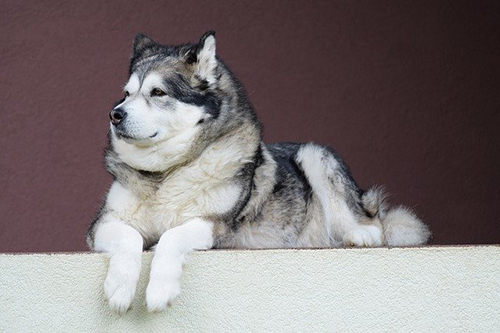
While they may look the part of a wolf, the Alaskan Malamute is anything but wolf-like. They may be strong, intelligent and independent with an athletic build, their real gift is that of being a companion and friend.They were originally used to pull heavy sleds over long distances and used to help hunt seals and polar bears, but nowadays, they may participate in a dog sport but they prefer to be by your side while you watch TV. They are considered to be one of the oldest and largest of the sled dogs. If sled pulling is not their idea of fun, neither is being a watchdog or a guard dog. They may look intimidating, but they consider everyone to be a friend. They also don’t bark much but have been known to howl and make a strange wooing sort of sound. They are highly intelligent but stubborn, and at 85 pounds, they need an owner who I willing to train and socialize them properly. They like plenty of room to run, dig, and exercise and won’t be happy living in an apartment. They love to play and do well with children and another dog. They are the quintessential pack animals preferring to be part of the action, every step of the way. Their thick coat comfortable in cold climates, but they do not do well in the heat.
Alaskan Klee Kai

You may have heard of the Alaskan Klee Kai, but you probably haven't seen one; they are relatively rare, and were only recognized by the AKC in 1997. With the Alaskan Husky as a forebear, the Alaskan Klee Kai belongs to the Spitz family of dogs. It is significantly smaller than the Husky, however, and many people think it is still a puppy, even when fully-grown. The Alaskan Klee Kai tend to be cautious and wary of strangers, and need to be socialized properly all through their puppyhood. At the same time, they are affectionate and devoted to their family, and will do their best to please their owners. This is a very intelligent breed, and they learn quickly. Klee Kais can also become bored and destructive if left alone, and need both physical and mental stimulation. They need a good walk every day, and some games at home or in the garden to keep them engaged. After some exercise and some fun, they are happy to play the couch potato on the nearest sofa.
American Eskimo
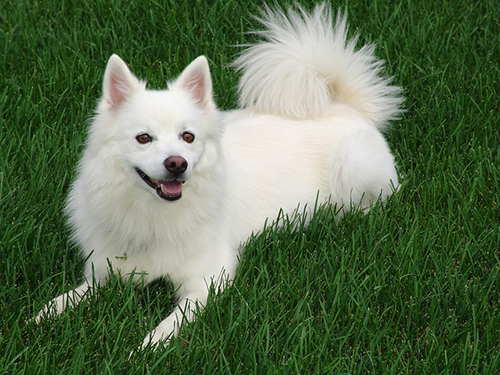
Despite the name, this really is not an Alaskan dog Breed as many people think. They were bred in Germany and were once called the White German Spitz. But due to anti-German biases during World War One, they were renamed, “American Eskimo Dog.” American Eskimo Dogs come in three different sizes, the toy, miniature and the standard and look similar to the Japanese Spitz and the Samoyed. They were originally bred to guard, but they are not an aggressive breed. Being very vocal and territorial, they make great watch dogs and companions. Still considered by some countries to be the German Spitz dog, the two breeds have diverged after they initially came to the United States.
Siberian Husky
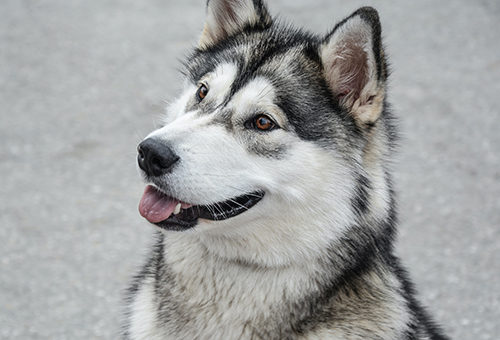
Everyone has a different reason why they choose their breed of dog. Some are looking for a dog to laze around their home like their home with their humans. Not all dogs are up for this sort of lifestyle though. Some pooches are lazy. Others, not so much! No one would ever accuse the Siberian Husky of being a lazy doggo. Boasting a working class background, the Siberian belongs to a class of dogs called a Spitz. These dogs work hard. With its strong and muscular, yet deceptively compact body, this breed does more than pull its weight when it comes to dog sleds. At the same time, these pups aren’t exclusively loved for their ability to work. They are also absolutely gorgeous creatures. Perhaps the most distinguishing feature of the Siberian Husky is its eyes. These peepers grab your attention, especially when both of them are an icy blue. They can have brown eyes, as well as one brown eye and one blue (heterochromia). Regardless of the colour, they are eyes that are all too easy to get lost in. Before bringing a Siberian Husky into your home, you should be aware that it is a pack animal, so it needs companionship and to feel like it is part of the family. This is a dog that requires a great deal of responsibility, so it’s important to understand what you are getting yourself into before bringing one home. Read on to find out more about Siberian Huskies.
Samoyed
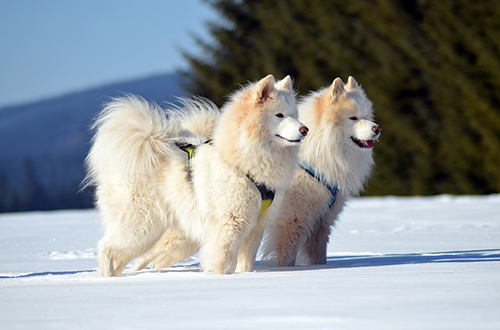
It's known as the "Sammy smile," the slight, but discernible, upturned corners of the Samoyed's mouth. This is a happy, good-natured dog with a glass half-full attitude toward life and the people he lives with. The Samoyed's fondness for humans probably stems from his close association with the Samoyede (now know as the Nenetsky) people who bred and raised him thousands of years ago on the Taimyr Peninsula of Siberia. The dogs pulled sleds, herded reindeer, hunted game, and protected the Samoyede against predators. The dogs also lived with the people, played with the children (which he still enjoys), and helped keep them warm in the cold climate. To this day, the Samoyed's reputation as an intelligent, dignified, family dog is well deserved. He often chooses to dote on one special person in the household, but he is affectionate with everyone in the pack. Happiest when he is part of family life, this breed needs to be with people. In fact, leaving a Samoyed alone too much is the best way to make him miserable. As friendly and smart as this breed is, the Samoyed is challenging to own. He can be a talkative dog, voicing his likes and dislikes with bellows, howls, or barks. It's best to keep this working dog busy, otherwise he's likely to resort to annoying or destructive behaviors such as digging, jumping the fence, getting into garbage, or chewing shoes. His hunting instinct is strong, so it's difficult for him to resist chasing squirrels, rabbits, or even cats. Even a well-trained Samoyed can't be trusted off leash.
Greenland
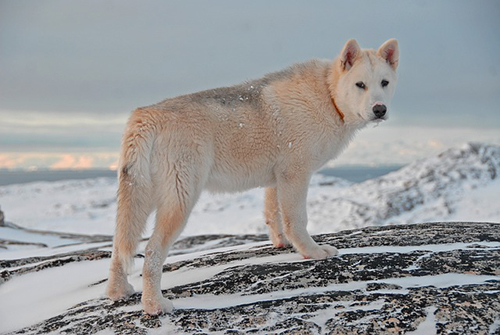
The Greenland Dog (Greenlandic: Kalaallit Qimmiat, Danish: Grønlandshund) is a large breed of husky-type dog kept as a sled dog. They were brought from Siberia to North America by the Thule people 1,000 years ago, along with the Canadian Eskimo Dog that is genetically identical. Today the breed is considered as nationally and culturally important to Greenland and efforts are made to safeguard its purity. In western Greenland north of the Arctic Circle and entire eastern Greenland, it is illegal to import any dog from outside (except for police and assistance dogs with a special permit). In the southwest, such restrictions are not in place and the purity of dogs is not monitored. As the population has been falling (c. 15,000 in Greenland as of 2016), a number of projects have been initiated in an attempt of ensuring that Greenland's dog sledding culture, knowledge and use, along with the breed itself, are not lost.
Seppala Siberian Sled Dog
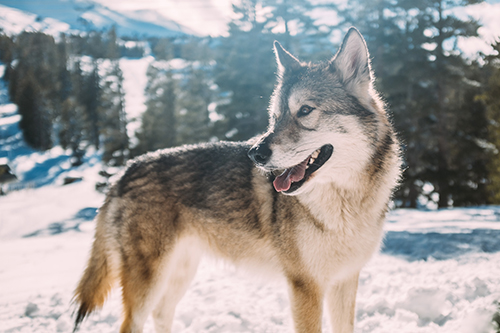
The Seppala Siberian Sleddog is a rare working dog breed, the Seppala Siberian Sleddog is developed for the purpose of pulling a sled in cold country. It is a moderate-sized dog averaging 18 to 23 kg (40 to 50 pounds) weight and 56 to 58 cm (22 or 23 inches) height. Colours and markings are considered of little importance; eyes may be brown, blue or any combination of the two colours. Seppalas are active and energetic but very docile and trainable. The defining characteristics of the breed are its natural, primitive appearance, its highly developed work ethic, and its affectionate, cooperative, and highly bonded nature. They tend to be more trainable than other sled dogs and to be more highly bonded to their owners. The Seppälä Siberian Sleddog disposition is active, merry, and often quite inquisitive, although sometimes showing great reserve with strangers. A stable and serious temperament, neither nervous nor aggressive, is characteristic. Natural, innate sleddog mentality is a primary characteristic of Seppälä dogs. Their nature is highly cooperative. They show great seriousness in their work in harness.
